Tengboche Monastery
Tengboche Monastery is a wonderful pilgrimage, perhaps a place to enjoy the symbiosis of mountains and gods.
Tengboche Monastery is a wonderful pilgrimage, perhaps a place to enjoy the symbiosis of mountains and gods.

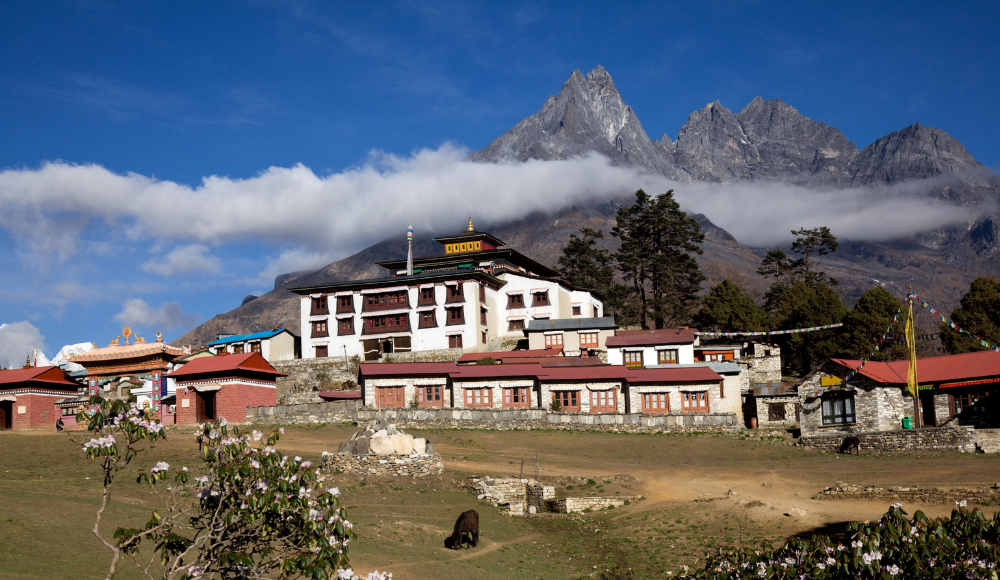
When most people think of Nepal, they imagine the poverty-stricken villages and the Himalayas in the backdrop. Yet as far as fairy tales go, this country of breathtaking beauty is home to incredible history and culture. Nestled high in the Himalayas are the premises of Tengboche Monastery, a National Monument that has been preserved for centuries and remains one of the most popular destinations in Nepal. While there are many monasteries located in this area, Tengboche is one of the major Buddhist institutions and is known for its cultural and historical significance.
Nepal is a beautiful country with some of the most important Buddhist temples and monasteries. There are monasteries everywhere, but it's Tengboche has become one of the most well-known to tourists. This Tengboche Monastery (Thyangboche or Dawa Choling Gompa) monastery is situated at 3867m above sea level. It's considered a holy land for many Nepalese people and there are even hieroglyphic inscriptions which state that this particular area is protected by the gods.
The Sherpa religion, which is based on Tibetan Buddhism, gives great attention to the status of the teacher (lama) and monastery, the connection between life and death, specific rites, and vibrant symbolism. Tengboche Monastery in Everest region is one such which is founded as an introduction of fundamental Buddhism which was the initial root of the Sherpas in Nepal. The Sherpa religion incorporates shamanic and animist components from ancient religions, particularly the pervasive notion of place-based deities. For instance, Chomolungma, the Mother of the Gods, is represented as Mount Everest. And their lifestyle is somewhat connected with the monasteries and mountains.
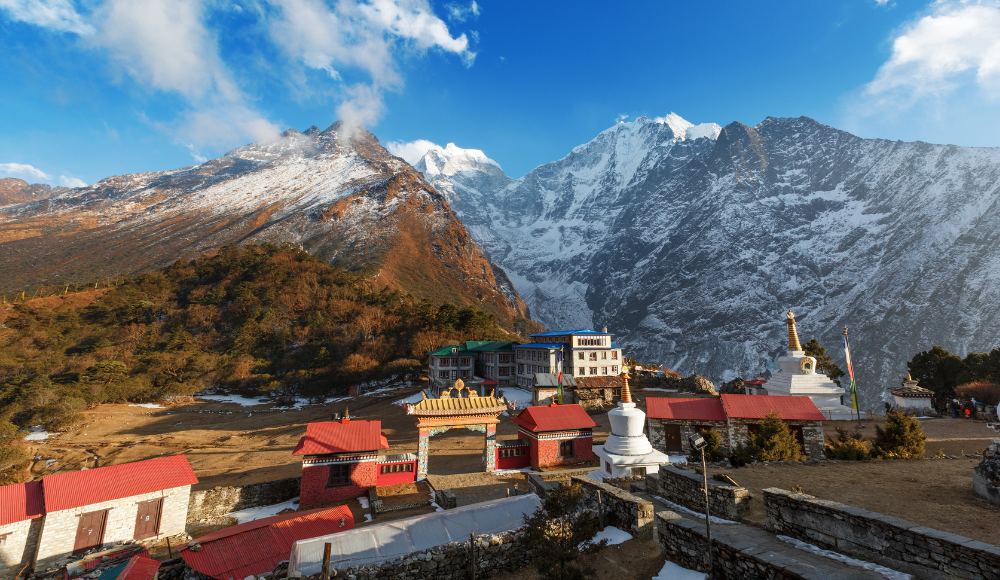
Tengboche monastery was established in the 19th century, and it's the largest monastery in the Khumbu region. There is a prayer room where people come to pray and meditate. The monastery is a prominent sacred site in the Khumbu valley as it is a major landmark in the Everest Base Camp route. Situated in the confluence of the Imja Khola and Dudh Koshi river systems, the monastery is known for the stunning backdrop of Mount Amadablam it has and the wonderful pilgrimage it offers.
The Mani Rimdu festival, which takes place in November, is well known for this monastery. The famed mask dances performed by the monks during the festival's three days serve as a focal point of the celebration. The victory of Buddhism over the Bon faith is portrayed in the dance play. Like many other festivals, the festivities during Mani Rimdu symbolize the triumph of good over evil.
Besides the incredible religious significance, the Tengboche Monastery is a place from where the magnificent mountain panorama is spectacular. Some Himalayas including Mount Everest, Lhotse, Tawache, Tham Serku and Ama Dablam are visible from the monastery premises. Sagarmatha National Park, also the highest National Park in the world, is home to this monastery. That’s why sometimes it is referred to as a wonderful heritage within a Heritage site.
The sacred site trail project, which encompasses ten monasteries of the Khumbu region, is developed to facilitate pilgrims and trekkers with Buddhist pilgrimage. Tengboche is the last monastery where the trail ends in a clockwise direction.
The popularity of this monastery in particular is because of its religious importance. Besides that, it offers jaw-dropping Himalayan views to trekkers and adventure enthusiasts. It is also a stopping point for the trekkers trekking to Everest Base Camp and Kala Patthar. The small settlement of Tengboche houses the trekkers in teahouses and lodges making it one of the most well-known monasteries in Nepal. The significance of Tibetan Buddhism can be explored while trekking in the highlands of Everest in this area.
|
Place |
Tengboche Monastery |
|
Established |
1916 |
|
Founded by |
Lama Gulu |
|
Religious Affiliation |
Tibetan Buddhism |
|
Location |
Khumjung, Khumbu |
|
Elevation |
3,867 metres (12,687 ft) |
|
Architecture |
Tibetan Style |
|
Major Festival Celebration |
Mani Rimdu |
Tengboche Monastery is relatively a new place built by Lama Gulu in 1916. The monastic scene is believed to have existed in the Everest region as early as the 15th century as the Sherpa settlers arrived in Khumbu valley. The Tengboche Monastery was built in affiliation with the prime monastery Rongbuk Monastery in Tibet. Rongbuk Monastery is a Tibetan Buddhist monastery of the Nyingma sect and lies near the northern Everest Base Camp at 5009m.
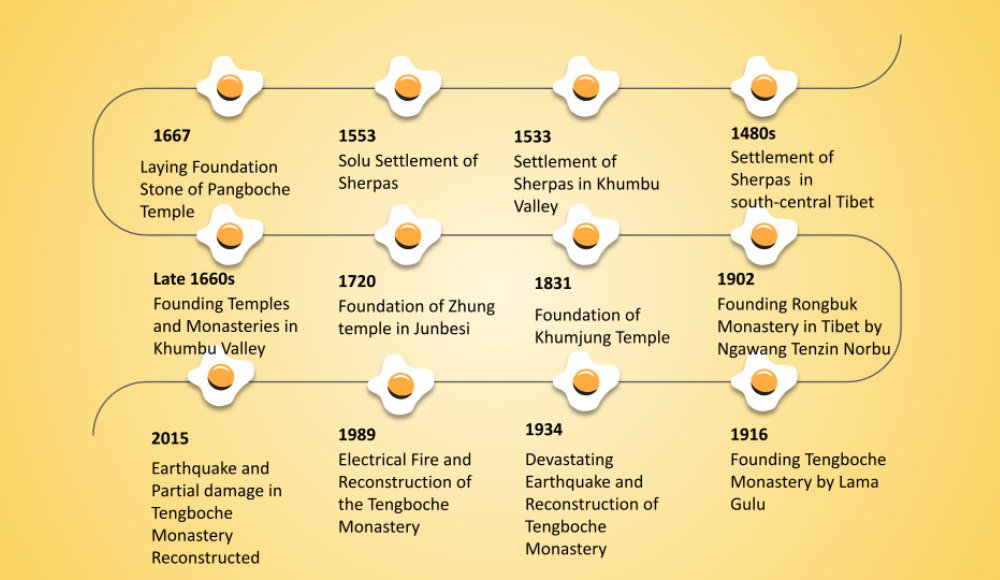
The Tengboche Monastery has undergone several reconstructions. The earthquake of 1934 damaged the monastery and it was rebuilt again. Again, in another tragic incident, In 1989, the monastery was damaged by fire and subsequently rebuilt again.
The influence of Tibetan Buddhism in the Khumbu region does not have a very long history. It has only been four centuries since Tibetan Buddhism’s introduction in the Khumbu region. As per the Tibetan inscriptions found, the Khumbu valley along with Rolwaling and Khanbalung valley as the sacred places of religious significance.
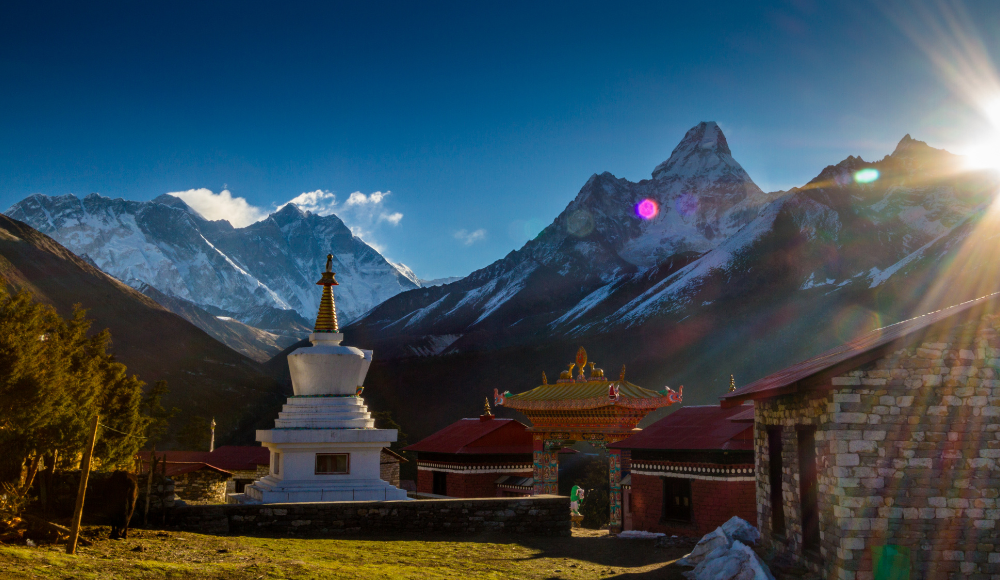
Ngawang Tenzin Norbu, also considered Sangwa Dorje's fifth incarnation, is believed to have laid the foundation stone of Rongbuk Monastery on the Tibetan side and blessed Chatang Chotar, also known as Lama Gulu to build the Monastery on the southern side on the way to Everest in Tengboche.
Though Lama Gulu is known as the founder of the monastery, the infrastructure and building development fund was provided by three local sherpas. One of the three Sherpas was the patronage of Rana rulers and a tax collector who helped in building the monastery in Tengboche. Besides that, it is said that Sherung Sherpas have also contributed to building the monastery besides the locals of Khumbu. The construction was started in 1916 at the present location and different works such as adding chortens and walls have been started. This monastery is credited to be the first celibate monastery of the Nyingmapa lineage in Khumbu.
The earthquake of 1934 damaged the monastery completely. With the death of Lama Gulu, the reconstruction of the monastery was succeeded by his noble Umze Gelden. It was highly supported by Ngawang Tenzin Norbu - the founder of Rongbuk Monastery. The monastery was re-established by the monks and the locals with the assistance of a talented Lhasa-based carpenter. A prominent artist named Kappa Kalden painted exclusive murals.
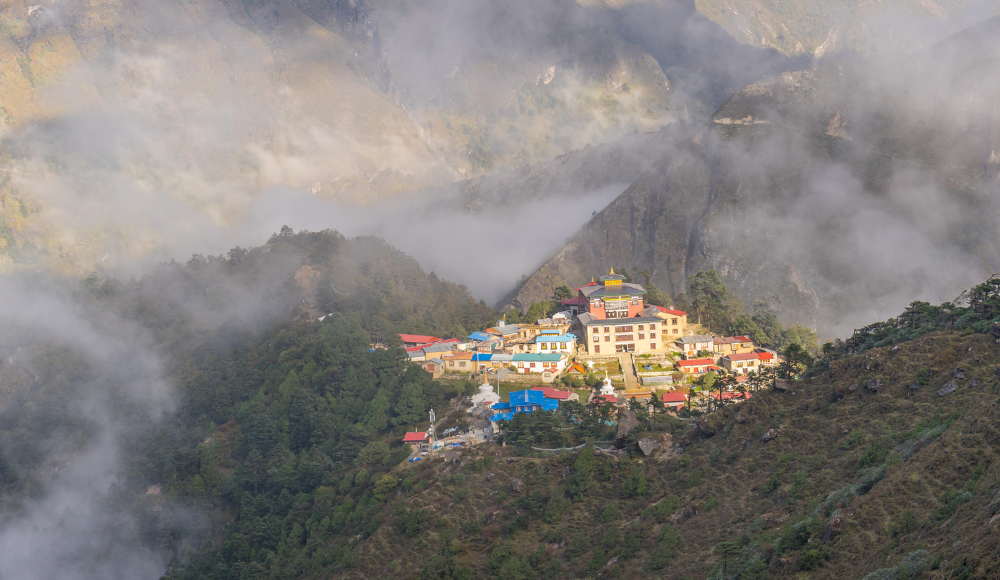
After the rebuilding process, the monastery gained widespread recognition as a result of an influx of tourists in Khumbu, especially for Trekking and Mountaineering activities. It was built while keeping the scriptures and statues safe. The monastery gained fame and funding and even started teachings and prayers on its premises.
The Tengboche monastery's main building and courtyard caught fire and burned to the ground on the night of January 19, 1989. The devastating fire destroyed the vicinity of the monastery and with that the scriptures, statues and old murals and wood carvings. The electrical malfunction associated with small hydropower was the cause of the fire in Tengboche.
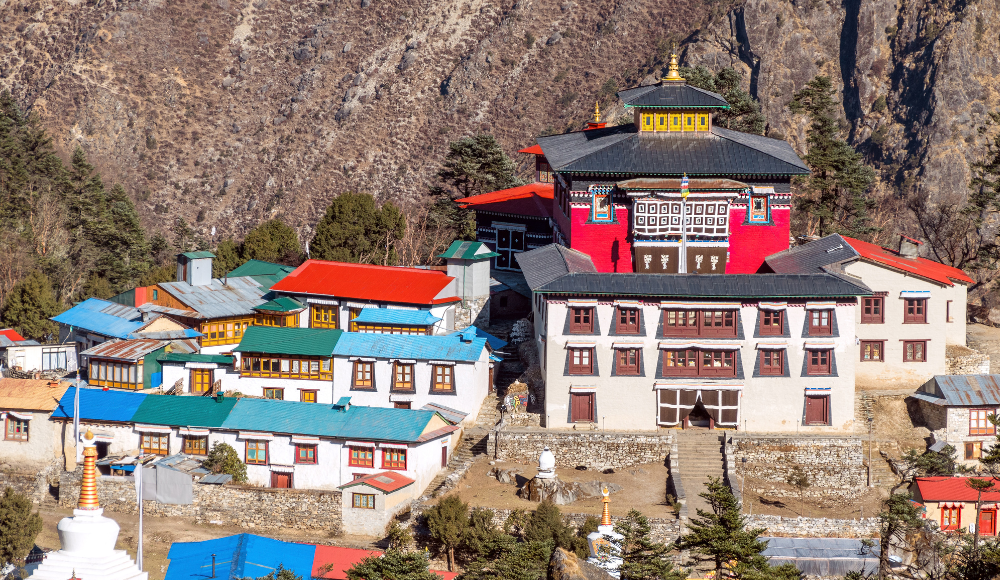
The building was a lovely illustration of traditional Sherpa architecture, with expertly painted paintings, monastery architecture and amazing surroundings featuring a monastic lifestyle. Most of the relics, inscriptions and artifacts were damaged in the fire causing disruption in the rare texts and murals. Though the materialistic history was gone with the fire, no lives were lost in Tengboche that night.
The incarnation of Lama Gulu, Nawang Tenzing Jangpo started the reconstruction of the monastery. The Sherpa residents of Khumjung, Kunde, Phortse, Pangboche and Namche arrived to assist with the task and provided their services to rebuild the monastery. The construction was completed with the help of donations and local labour and brought the shape in which the monastery is present today.
In 2015, Nepal was hit by a devastating earthquake which damaged a lot of monuments along with partial damages in Tengboche Monastery. The damages in the monastery were repaired and opened to the public.
With towering snow-capped peaks on all sides, Tengboche is undoubtedly one of the most stunning locations on earth. A lot of the most well-known tourist images of Nepal are of Tengboche, often captured with Ama Dablam in the background. The location has garnered a lot of love from visitors of all kinds.
Perched on a hill in a confluence of Imja Khola and Dudh Koshi rivers, Tengboche Monastery is one of the most beautiful places on earth. The Himalayan backdrop of the monastery is widely admired by pilgrims and trekkers in the Everest region. Monasteries are locations for Buddhist study and meditation. Their floor plan is usually inspired by a mandala, a sacred geometric pattern that reflects the cosmos and the operation of divine forces.
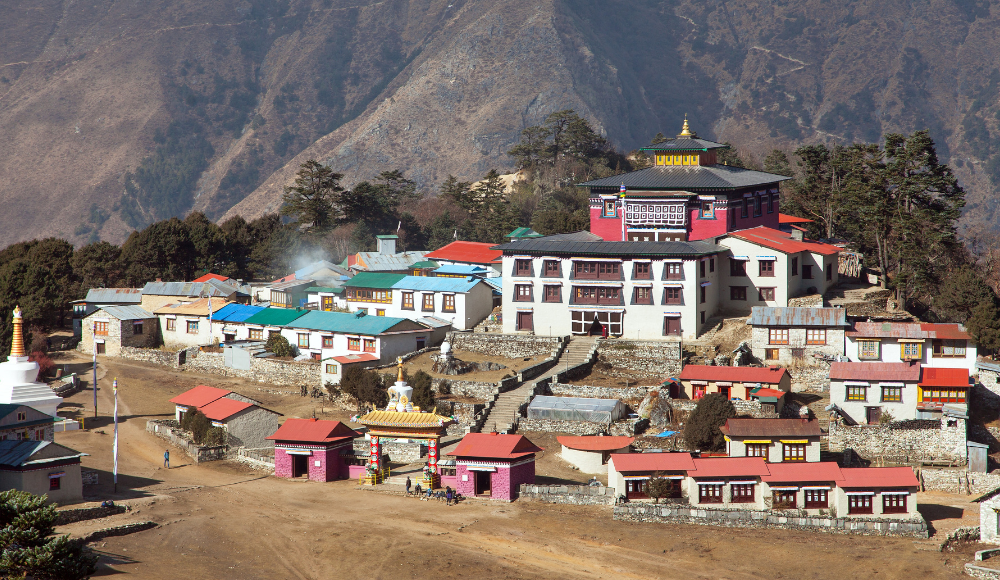
This design features a central prayer hall with a thangka (a big instructional painting of silk), holy sculptures, benches for the monks or nuns, and nearby housing. A doorway stands watch over a monastery's entryway. Typically, religious symbols of protection are painted on the ceiling and walls of the building.
There are prayer wheels near monasteries (mani-wheels). Inside these cylinders, paper mantras are kept. The mantra will pass as you rotate the cylinders in a clockwise direction. Pay respect by maintaining concentration and putting an end to idle chatter as you rotate.
It's likely that sometime in 1930 the first Mani Rimdu ceremony at the Tengboche monastery. Tibet's Rongbuk Monastery is where the event began to take place. The monks dress in masks that represent holy beings and engage in ritual dancing during the Mani Rimdu prayer rite. The devout spectators travel from various villages to receive Sonam from the Head Lama's blessings and to give corn and grain donations to the monk community. Mani Rimdu is one of the most popular Himalayan Festivals in Nepal.
The festival is celebrated for 19 days and commemorates the founding of Buddhism by Guru Rimpoche Padmasambhava. The festival is celebrated for world peace. The Tibetan lunar calendar's tenth month, which corresponds to the first day of the English calendar's October-November period, is when Mani Rimdu is observed. It is also a good time to go on a trek to the Everest Base Camp and Gokyo valley.
At the three Sherpa monasteries of Chiwong, Thami, and Tengboche, Mani Rimdu is performed. However, in Thubten Chöling, a monastery founded by Rongphu refugees, the festival is performed in a slightly different manner.
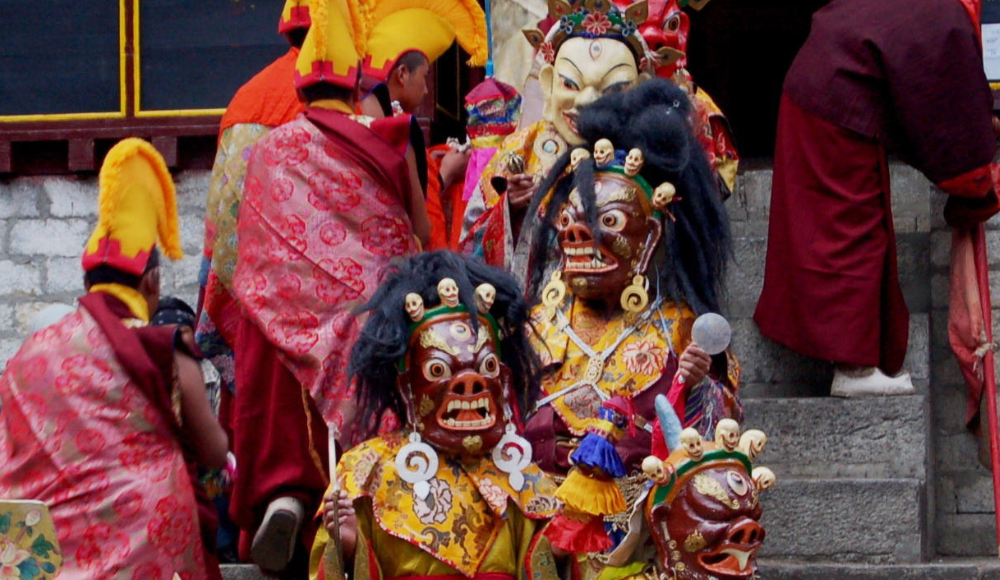
Although it may be a few days shorter in some monasteries and some years, Mani Rimdu can last up to eighteen days. During that time, ritual practice takes up several hundred hours. There are nearly fifty hours of unique rituals done, eliminating the significant repetition involved. Over two hundred folios make up the bulk of the thirty or so liturgical texts. Additionally, there is a substantial amount of information committed to memory, including frequently used mantras, invocations and exhortations, daily prayers, etc. There are four documented commentaries on the principal deity's rite. This festival is magnificent in terms of the dances and tantras performed and the vehemence of the respect and ritual it holds in the regular life of Sherpas.
If you are planning to visit Tengboche monastery, planning it ahead of time, and looking after the ritual date is best advised. The festival is a significant remark and a wonderful witness of how the mountain monastical life is in the Himalayas of Nepal.
The Sacred Sites Trail Project is an initiative to provide trekkers and interest groups with the lesser-known parts of Khumbu, perhaps the Sagarmatha National Park. The Sacred Sites Trails concept was put up as a way to develop a brand-new, circular tourist route and entice visitors to lesser-known sacred sites and settlements. By encouraging travellers to explore areas off the beaten path, the project hopes to promote tourism advantages more widely while assisting in the restoration and enhancement of local cultural skills and traditions.
Unexplored but important cultural sites are available along the Sacred Sites Trail, which also features stunning mountain views and lush valleys. In contrast to the most well-travelled track, the round route leads to lesser-known and unexplored communities in Khumbu where there is no tourism-related chaos and one may appreciate the peace and quiet of the surroundings. It is truly a sight for sore eyes to see majestic, untamed mountains with waterfalls gushing down their steep mountain slopes.
The trail involves several monasteries, including the Tengboche monastery in Khumbu valley. A spiritual atmosphere is infused into the trail's pristine mountain environment by old monasteries, Mani stones, Chortens, and Kanis. Trailing in the Sacred sites of Khumbu could be a wonderful dimension and alternative to what the other trails in Khumbu offer.
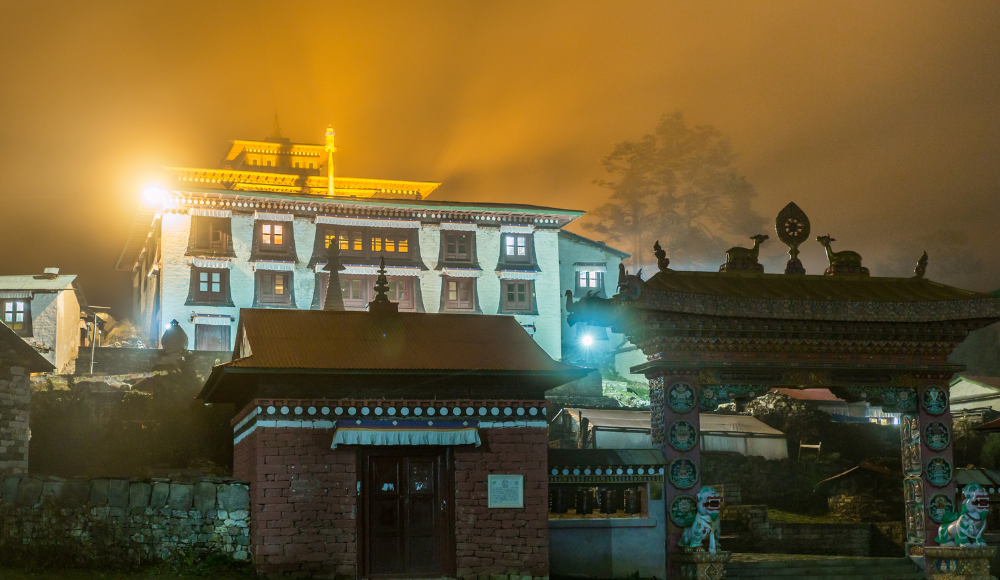
Namche Bazaar and six other significant communities within the Sagarmatha National Park and buffer zones are part of the Sacred Sites Trail Project. The project’s circular path begins at Namche Bazaar, travels through a number of locations in the Thame valley, and ends at the Tengboche Monastery, passing by ten monasteries, caves, hermitages, and nunneries en route.
Some of the monasteries that are a part of the Sacred Sites Trail Project are Namche Monastery, Thamo Monastery, Thame Monastery, Kerok Monastery, Gendukpa (Gamu Phuk) Gamu cave, Lawudo Retreat Center, Khunde Tsamkang, Khumjung Monastery, Phortse Monastery, Pangboche Monastery, Debuche Nunnery (Ani) Monastery, Nakarjung Hermitage and Tengboche Monastery.
Sagarmatha National Park (SNP), established in July 1976, is the second-most popular national park in Nepal and is significant on a global, cultural, and environmental scale. With four peaks over 8000 meters, SNP is one of the most popular mountain tourist destinations in the world. Tengboche Monastery also lies in the territory of Sagarmatha National Park. That’s why it’s sometimes also referred to as heritage within a heritage site. SNP is known to have a wide range of species including endangered and rare Snow Leopard and Panda.
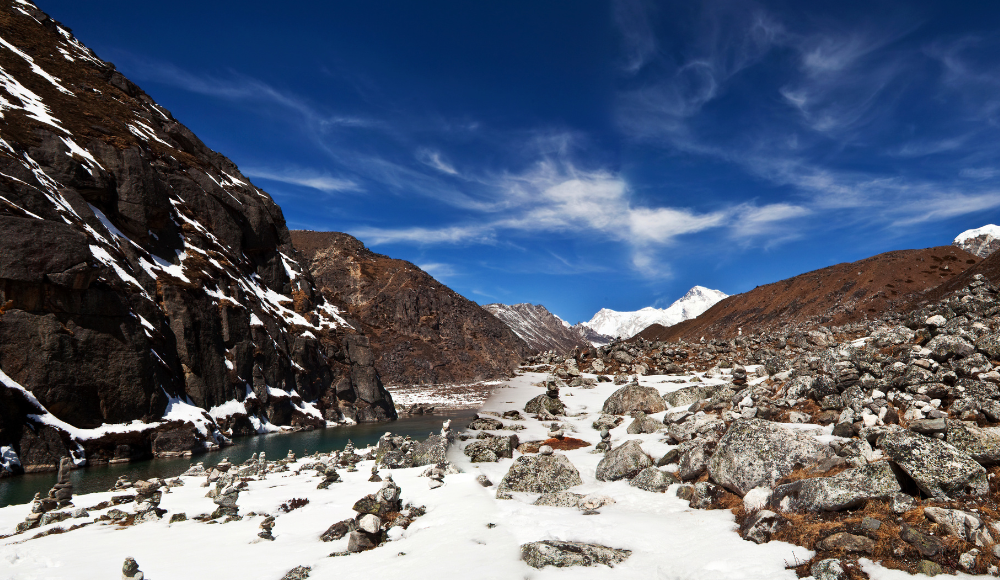
Sagarmatha National Park is a national park in Sagarmatha Zone, the highest elevation on Earth. It is located at the head of the Khumbu Glacier, in the Solukhumbu District of Nepal, near Mount Everest and Lhotse Base Camp. The park also includes Khumbu and Gokyo Valley which is now a part of Sagarmatha National Park. The latest survey has estimated that more than 30,000 people visit Sagarmatha National Park every year, making it one of the most visited parks in the world. It is also a UNESCO-declared world heritage site. It was gazetted as a place of incredible importance by UNESCO in 1979.
|
Mount Everest (8,848.86 m) |
|
Lhotse (8,516 m) |
|
Nuptse (7,861 m) |
|
Ama Dablam (6,856 m) |
|
Khumbila (5,761 m) |
|
Taboche (6,542 m) |
|
Kongde (6,187 m) |
|
Kangtega (6,685 m) |
|
Thamserku (6,608 m) |
The Everest Base Camp trek is a must-do for anyone interested in trekking and adventure travel. The experience of standing on the highest region of the earth’s surface, gazing up at Mount Everest – all those dreams can come true on the EBC trek.
Just about anybody can do this trek. It’s a relatively moderate hike and takes between 10 to 15 days from start to finish. Though you are required to reach up to 5600 m above sea level elevation, it's doable with preparation and some guidance and acclimatization. There are chances of Altitude Sickness, but it's doable. If you’re worried that your fitness level isn’t quite up to snuff, don’t be concerned. The EBC trek is a great choice even if you are just an ‘okay’ hiker. If you are concerned about how difficult Everest Camp really is, find the details on Everest Base Camp Trek difficulty here.
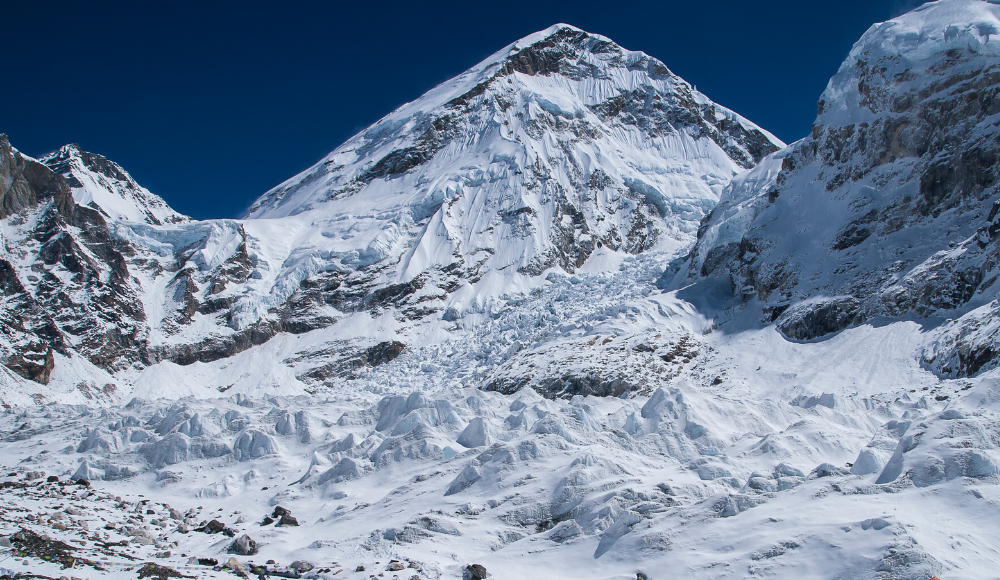
Everest Base Camp is a unique experience, and it has a lot to offer. A trek here not only entails scenery that you won't find anywhere else in the world but also allows you to partake in different cultures and faiths. If you want some sense of what it feels like to reach Mount Everest's summit, consider an ascent up to Everest Base Camp. It will give you an idea of just how high 8848m really is. Trekking to the world’s highest peak and its base camp of it takes about 15 days from Kathmandu. A flight from Kathmandu takes you to Lukla and the ascends through Namche Bazaar, Tengboche, Dingboche and Gorakshep takes you to the Everest Base Camp and Kalapatthar. The same route will take you to Lukla and a flight takes you back to the capital. On the way to Everest Base Camp, you can visit the Tengboche Monastery, which is also one of the major attractions of the trek.
|
Permit |
Sagarmatha National park entry fee |
Khumbu Pasang Rural Municipality entry fee |
|
Cost for Nepali |
NPR 100 |
- |
|
Cost for Indian |
NPR 1500 |
NPR 2000 |
|
Cost for foreigners |
NPR 2000 (~US$17) |
NPR 3000 (~US$25) |
Tengboche Monastery, also known as the ‘Dawa Choling Gompa’ or ‘Lama Gulu's Hermitage’, is a Buddhist monastery in Solukhumbu District of Nepal. The Tengboche Monastery is a Tibetan Buddhist monastery in the Khumbu region of Nepal and is one of the most famous monasteries in all of Asia, especially in the mountaineering arena. This monastery was first built in 1916 by the Lama Gulu and later reconstructed after a fire by Nawang Tenzing Jangpo.
The best time to visit the monastery is during the festival time when there is a celebration of Mani Rimdu is held. The festival is celebrated somewhere between Mid-October to Mid-November period. So, planning at this time can be beneficial in terms of the experiences and cultural attractions you get to witness in the Khumbu highland of Nepal. The best time to visit Tengboche Monastery, however, is during the spring and autumn seasons. In these seasons, the weather and climate are moderate, the temperature is fine and visibility is better. So, you can explore the mountain vistas and the corresponding culture of Sherpas in Nepal. For more information, visit Best Time to visit Everest Base Camp.
Planning the Everest Base Camp trek besides visiting Tengboche Monastery is a wonderful plan. Also, you can even combine Everest Base Camp Gokyo Lakes and Tengboche Monastery in the Khumbu region. Everest Three Passes Trek could make a great deal if you want to explore the high passes of the Everest region in Nepal.
Yes, Mount Everest (8,848.86 m) is visible from the Tengboche monastery. Besides that several mountains such as Lhotse (8,516 m), Nuptse (7,861 m), Ama Dablam (6,856 m), Khumbila (5,761 m), Taboche (6,542 m), Kongde (6,187 m), Kangtega (6,685 m), and Thamserku (6,608 m) etc. are spectacular.
Tengboche Monastery is situated at an elevation of 3867m. It is perhaps the largest monastery in the Khumbu region of Nepal. But it is not the highest monastery in the world. The trophy of the highest monastery is taken by the Rongbuk Monastery in Tibet which lies at an elevation of 5009m above sea level.